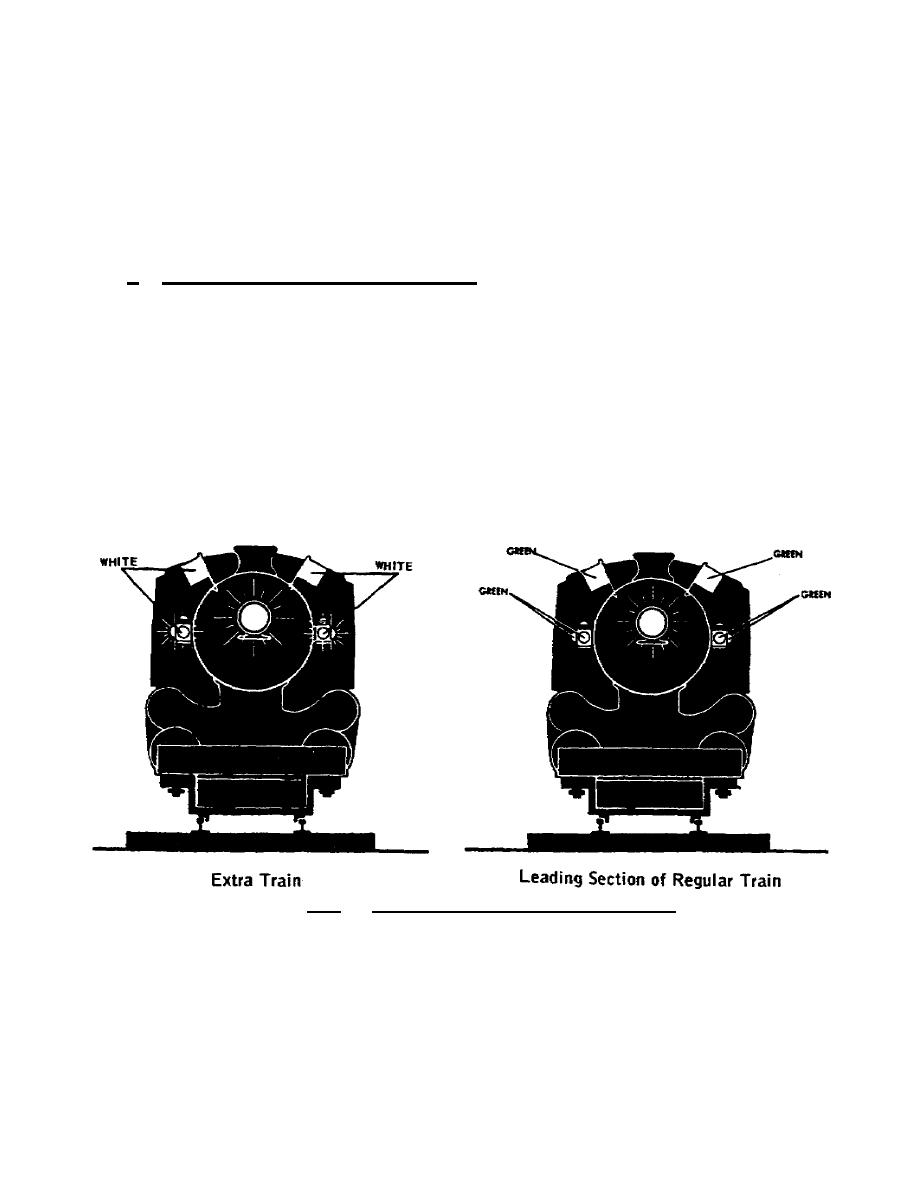
2.15. CLASSIFICATION SIGNALS AND MARKERS
When flags by day and in addition lights by night are placed on
the front of the engine, they are called classification signals, and
are used to show what type of train it is. When flags by day and in
addition lights by night are placed on the rear of a train, they are
called markers. Every type of train must display markers to qualify
as a train and to show that the train is complete.
a. Train classification signals. A regular train displays no
classification signals in front unless it is being run in sections.
The first section of a regular train displays green flags by day and,
in addition, green lights by night on the front of the locomotive as
shown on the right in figure 2. 6. Each section carries these same
classification signals except the last section, which carries none.
For example, if a train is being run in three sections, the first two
sections display the appropriate green classification signals, and
the last section runs as a regular train showing no classification
signals in front. If there are only two sections, the first displays
the green classification signals, and the second does not. Extra
trains are not run in sections.
Figure 2.6. Train Classification Signals.
An extra train always displays white classification signals on
the front of the locomotive as shown on the left in figure 2.6.
White flags are used during daylight in addition, two white lights
are used by night.
40


 Previous Page
Previous Page
